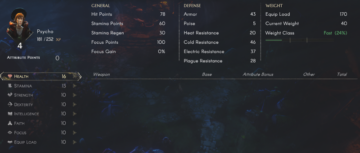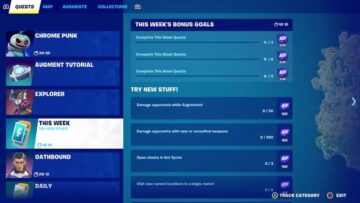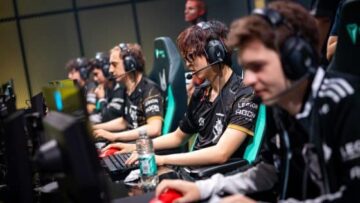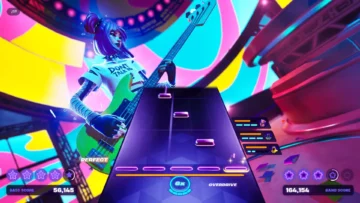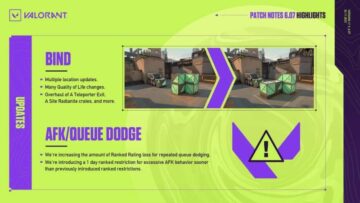Uncover the truth behind Valve’s sub-tick system in CS:GO. Is it a true game-changer or just clever marketing
Counter-Strike has etched itself into the history books forever in the world of competitive first-person shooters. CS:GO, with its servers running at 64-tick or 128-tick, set a high standard for fast and accurate gameplay. But the excitement peaked when Counter-Strike 2 was announced, bringing a potential game-changer – the sub-tick system.
This article takes a deep dive into Valve’s new tick system. We’ll look at it closely with a professional and straightforward approach to figure out if it’s truly revolutionary or just a marketing tactic. Our focus is solely on Valve’s new tick technology and how it might transform FPS gaming, answering the big question: Is Valve’s enhanced tick rate system a game-changer or just a clever marketing trick?
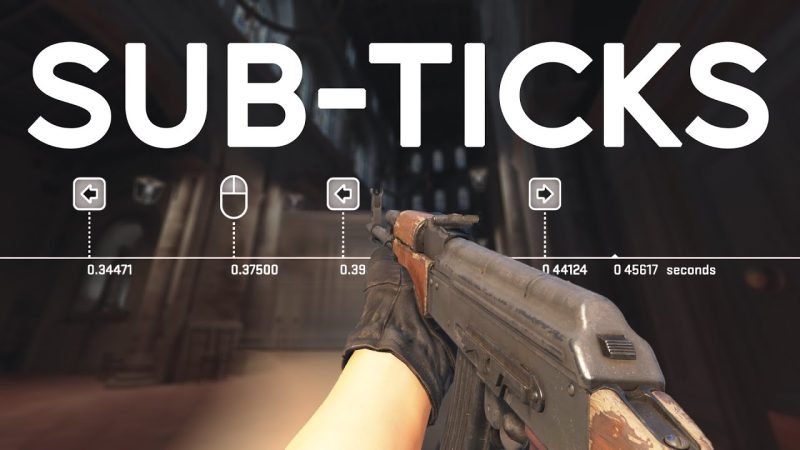
As we delve into this topic, we aim to provide a clear and unbiased analysis, shedding light on the inner workings of this innovation. So, let’s embark on this journey together and uncover the truth behind Valve’s sub-tick: Is it a game-changer poised to redefine FPS gaming, or could it, perhaps, be a marketing strategy designed to captivate our imaginations?
Valve’s Tick-Rate Evolution in Counter-Strike
In the dynamic landscape of competitive gaming, Valve has made enduring strides in perfecting the gaming experience through its renowned title, Counter-Strike: Global Offensive (CS:GO). The journey commenced with CS:GO’s launch, where Valve introduced 64-tick servers for official matchmaking. This choice received mixed reviews from players, with some yearning for a higher tick rate, while others found the standard satisfactory.
As CS:GO matured, the emergence of third-party platforms like FACEIT and ESEA introduced the concept of 128-tick servers, elevating gameplay to a smoother and more precise level. This development prompted vigorous discussions within the CS:GO community about the ideal tick rate.
However, Valve’s commitment to innovation shines brighter than ever with the impending release of Counter-Strike 2, introducing the game-changing sub-tick system. This cutting-edge technology transcends traditional tick rates, redefining FPS gameplay’s boundaries. Valve’s tick-rate evolution underscores their dedication to delivering the best possible gaming experience, setting the stage for exciting transformations in competitive gaming’s future.
CS:GO’s Ticking Dilemma: Challenges Faced by Players
Counter-Strike: Global Offensive (CS:GO) has long grappled with the tick-rate dilemma, a critical factor in determining gameplay precision and smoothness. This ongoing debate has spawned challenges for players, the community, tournament organisers, and even the core gameplay experience.
Choosing between 64-tick and 128-tick servers has been a persistent source of discussion and division for players. The tick rate directly impacts gameplay, with 128-tick servers offering enhanced hit registration and responsiveness compared to their 64-tick counterparts. This disparity has led to frustrating in-game situations, where shots that seem on target mysteriously miss or where player movements appear less fluid. Such inconsistencies can bother competitive players who rely on split-second decisions.
[embedded content]
The CS:GO community has also grappled with the implications of tick rates. Discussions about the ideal tick rate have occasionally overshadowed other aspects of the game, with passionate debates on forums and social media. While Valve has introduced updates and improvements, the community’s differing opinions on tick rates continue to echo within the CS:GO ecosystem.
Additionally, tournament organisers have faced challenges in accommodating player preferences. Some professional players and teams have preferred 128-tick servers, but tournaments may still rely on 64-tick setups. This discrepancy in server choice can affect player performance and complicate organising competitive events.
NiKo would have hit this on CS2 pic.twitter.com/3Tc51KZlAt
— G2 Esports (@G2esports) March 22, 2023
The tick-rate issue in CS:GO is a reminder that even seemingly technical aspects of a game can have profound implications on the player experience, community dynamics, the esports scene, and core gameplay. As the CS:GO community looks ahead to Counter-Strike 2 and its sub-tick system, the ongoing dialogue around tick rates continues to shape the future of this iconic game.
Decoding Sub-Tick: What Sets It Apart from 64-Tick and 128-Tick
Approaching the impending launch of Counter-Strike 2, Valve has unveiled a game-changing feature known as the sub-tick system. This revolutionary technology promises to reshape the very foundations of first-person shooter (FPS) gameplay, rendering traditional debates about tick rates obsolete.
But what exactly is this advanced tick system, and how does it differ from the standard 64-tick and 128-tick servers that players have grown accustomed to? To grasp the significance of this innovation, we must delve into the intricate world of tick rates.
[embedded content]
In CS:GO and other multiplayer games, a tick is an update, a single processing step where the server calculates player movement, bullet trajectories, and other critical gameplay elements. The tick rate, measured in hertz (Hz), dictates the frequency at which the server updates its game state. For instance, a 64-tick server updates 64 times a second, while a 128-tick server doubles that frequency to 128 updates per second. These tick rates have been the foundation of CS:GO’s competitive landscape, impacting player movement and shooting accuracy.
Counter-Strike 2 brings a remarkable innovation with a new specialized tick system. Unlike its predecessors, where tick rate played a pivotal role in determining the responsiveness of actions, the game introduces the concept of Sub-ticks. These allow the game to remember your actions consistently, regardless of the server’s tick rate, be it the official 64 Hz or unofficial 128 Hz servers. This means that your commands in-game will receive immediate and precise responses, providing a seamless and more accurate gaming experience.
While Valve may not have opted for higher tick rates on official servers, introducing this next-gen tick system in Counter-Strike 2 marks a significant leap in improving the responsiveness of actions for all players. The change may be unrecognisable to those with minimal input lag and low latency. However, for long-time CS:GO players, the difference in input registration will be evident when transitioning to the successor game.
Despite this innovation, the community’s preference for third-party servers with higher tick rates still lingers. Whether Sub-ticks will be enough to sway players back to official servers remains to be seen. However, Valve’s commitment to enhancing the gaming experience underscores the ever-evolving landscape of competitive FPS titles.
The Sub-Tick Leap
Introducing the Sub-tick system in Counter-Strike 2 marks a promising leap in the franchise’s evolution. It is a testament to Valve’s commitment to enhancing the gaming experience, ensuring that actions in the virtual battleground respond with precision and immediacy. These ticks break free from the confines of traditional tick rates, offering players a consistent and responsive gameplay environment, regardless of the server they choose.
However, whether this innovation will be enough to lure players back to official servers remains uncertain. The community’s long-standing affinity for third-party servers with higher tick rates persists, and for many, this new system may be perceived as a welcome but modest improvement.
Will CS2 kill @FACEIT ? We try the new severs, I’ll let you know my feelings in a bit
-> ttv/kennyS
— kennyS (@kennyS_) September 7, 2023
As Counter-Strike 2 prepares to redefine the gaming landscape, the Sub-tick system represents a significant step forward. Its impact on the competitive scene and player experience will ultimately depend on how well it bridges the gap between official servers and the community’s demands. In the ever-evolving world of FPS gaming, this innovative tick system may be the key to keeping Counter-Strike’s legacy alive and thriving. Only time will reveal whether this innovation lives up to its potential and transforms Counter-Strike 2 into a true game-changer.
- SEO Powered Content & PR Distribution. Get Amplified Today.
- PlatoData.Network Vertical Generative Ai. Empower Yourself. Access Here.
- PlatoAiStream. Web3 Intelligence. Knowledge Amplified. Access Here.
- PlatoESG. Automotive / EVs, Carbon, CleanTech, Energy, Environment, Solar, Waste Management. Access Here.
- PlatoHealth. Biotech and Clinical Trials Intelligence. Access Here.
- ChartPrime. Elevate your Trading Game with ChartPrime. Access Here.
- BlockOffsets. Modernizing Environmental Offset Ownership. Access Here.
- Source: https://estnn.com/valves-cs2-sub-tick-game-changer-or-marketing-gimmick/
- 22
- 500
- 7
- a
- About
- accuracy
- accurate
- actions
- advanced
- affect
- ahead
- aim
- All
- allow
- also
- an
- analysis
- and
- announced
- apart
- approach
- around
- article
- as
- aspects
- At
- back
- BE
- been
- behind
- BEST
- between
- beyond
- BIG
- Books
- boundaries
- break
- bridges
- brighter
- bringing
- brings
- but
- by
- CAN
- captivate
- challenges
- change
- choice
- choose
- clear
- closely
- commenced
- commitment
- community
- compared
- Competitive
- concept
- consistent
- consistently
- content
- continue
- continues
- Core
- Costs
- could
- Counter-Strike
- Counter-Strike: Global Offensive
- critical
- cs
- CS:GO
- cutting-edge
- cutting-edge technology
- debate
- debates
- decisions
- dedication
- deep
- delivering
- demands
- designed
- determining
- Development
- dialogue
- dictates
- differ
- difference
- differing
- directly
- discrepancy
- discussion
- discussions
- dive
- Division
- does
- dynamic
- dynamics
- echo
- ecosystem
- elements
- elevating
- embark
- embedded
- enduring
- enhanced
- enhancing
- enough
- ensuring
- Environment
- esports
- even
- events
- EVER
- evident
- evolution
- exactly
- excitement
- Exciting
- experience
- faced
- factor
- FAST
- feelings
- Figure
- Final
- fluid
- Focus
- For
- forever
- forums
- Forward
- Foundation
- foundations
- FPS
- Free
- Frequency
- from
- frustrating
- future
- G2
- G2 Esports
- game
- Game Changer
- gameplay
- Games
- Gaming
- gaming experience
- gap
- Global
- go
- grand
- grasp
- grown
- has
- Have
- High
- higher
- history
- HIT
- How
- however
- HTTPS
- iconic
- ideal
- if
- imaginations
- IMMEDIATE
- Impact
- impacting
- Impacts
- impending
- implications
- improvement
- improvements
- improving
- in
- in-game
- Innovation
- innovative
- instance
- into
- introduced
- Introduces
- introducing
- Is
- issue
- IT
- ITS
- itself
- journey
- jpg
- just
- keeping
- kennyS
- Key
- know
- known
- landscape
- latency
- launch
- Leap
- Led
- legacy
- less
- let
- Level
- light
- like
- lives
- ll
- Long
- Look
- looks
- Low
- made
- major
- many
- Marketing
- marketing strategy
- marks
- May
- means
- Media
- might
- mixed
- modest
- more
- movement
- movements
- moving
- multiplayer
- must
- my
- NAVI
- New
- Niko
- not
- obsolete
- of
- offensive
- offering
- official
- on
- ongoing
- only
- Opinions
- or
- Other
- Others
- our
- out
- passionate
- per
- perceived
- perfecting
- performance
- perhaps
- PGL
- pivotal
- Platforms
- plato
- plato data intelligence
- platodata
- platogaming
- played
- player
- players
- poised
- possible
- potential
- precise
- precision
- preferences
- processing
- professional
- profound
- promises
- promising
- Provide
- providing
- question
- rate
- Rates
- receive
- received
- redefine
- redefining
- regardless
- Registration
- release
- rely
- remains
- remarkable
- Remember
- rendering
- renowned
- represents
- reshape
- respond
- responses
- responsive
- responsiveness
- reveal
- Reviews
- revolutionary
- role
- running
- s
- Satisfactory
- scene
- seamless
- second
- seem
- seemingly
- seen
- server
- servers
- set
- sets
- setting
- shape
- shines
- Shooter
- Shooters
- shooting
- significance
- significant
- single
- situations
- smoother
- So
- Social
- social media
- solely
- some
- source
- specialized
- Stage
- standard
- State
- step
- still
- straightforward
- Strategy
- strides
- such
- system
- takes
- Target
- teams
- Technical
- Technology
- testament
- than
- that
- The
- The Future
- The Game
- The Gap
- the world
- their
- These
- they
- this
- those
- thriving
- Through
- ticking
- time
- times
- Title
- titles
- to
- together
- topic
- tournament
- Tournaments
- traditional
- transcends
- transform
- transformations
- transforms
- transitioning
- true
- truly
- truth
- try
- ultimately
- Uncertain
- uncover
- underscores
- unlike
- unveiled
- up
- Update
- Updates
- valve
- very
- Virtual
- vs
- was
- we
- welcome
- well
- What
- when
- where
- whether
- while
- WHO
- will
- with
- within
- world
- would
- you
- your
- youtube
- zephyrnet
